
Bata's transformation for the aspiring modern Indian
In the 1920s, out of a population of around 350 million people, only about 10 million Indians wore footwear. The need of the hour was to make footwear accessible and affordable. In 1931, Bata started its first workshop on the west bank of the Hooghly River in Kolkata, and since then has kept up with the journey and aspirations of India's people
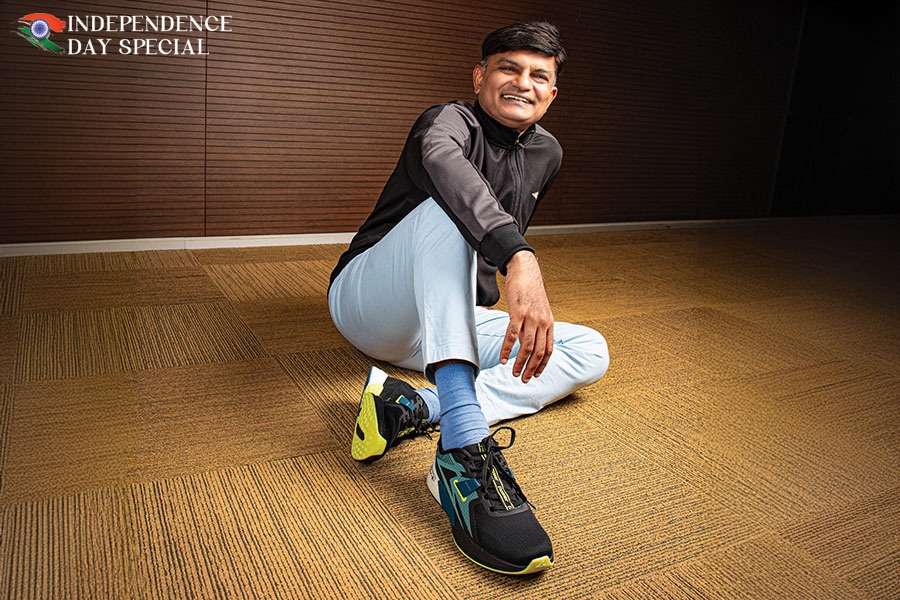 Gunjan Shah, MD and CEO, Bata India
Image: Madhu Kapparath
Gunjan Shah, MD and CEO, Bata India
Image: Madhu Kapparath
Prague, September 2018. The then President of India was about to reiterate an unmistakable perception, belief, and ‘reality’. “Bata is a brand with which all Indians have grown up and which all of us consider our own,” Ram Nath Kovind underlined during an official trip to the Czech Republic in 2018. “Bata shoes today walk in every village, every town, and every city in India,” Kovind reckoned, illustrating the omnipresent nature of the footwear brand, which had clocked staggering numbers in 2018.
Bata India sold 47.25 million footwear pairs, had 1,415 outlets, 10,296 employees, a revenue of ₹2,928.4 crore, a net profit of ₹329.6 crore, and occupied a staggering retail space of 3.07 million square feet across the country in FY18. Indeed, ‘our own’ brand had a bounce in its feet, and by 2018, it had populated every village, town, and city.
Rewind 113 years, Bata was taking baby steps in India. In fact, it was born out of a pinching reality. In the 1920s, out of a population of around 350 million people, only about 10 million wore footwear in India. The need of the hour was to make footwear accessible and affordable. In 1931, Bata started its first workshop on the west bank of the Hooghly River in Kolkata. By 1933, the brand opened 86 stores and sold an average of 40 pairs of footwear every week.
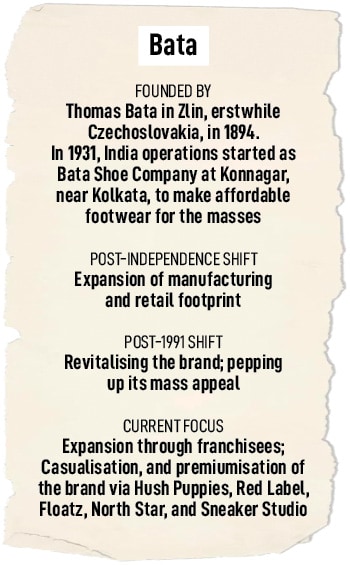 Then, three years later, came a turning point. In 1936, Bata rolled out pinstriped sneakers with the distinctive rubber toe guard—Bata Tennis—created for Indian school children. Bata Tennis was made in India, made for India, and made by Indians. As the brand started to seep into the socio-cultural fabric of the country, the Indian middle class, in return, began to embrace the brand that understood their needs, emotions, and pockets. Bata found a new family that was warm, accepting, and inclusive, and the brand found a bigger growth canvas.
Then, three years later, came a turning point. In 1936, Bata rolled out pinstriped sneakers with the distinctive rubber toe guard—Bata Tennis—created for Indian school children. Bata Tennis was made in India, made for India, and made by Indians. As the brand started to seep into the socio-cultural fabric of the country, the Indian middle class, in return, began to embrace the brand that understood their needs, emotions, and pockets. Bata found a new family that was warm, accepting, and inclusive, and the brand found a bigger growth canvas.
As the years rolled by, the emotional bonding hardened. On the supply side too, there was intense action as manufacturing gathered steam at Batanagar. Some 622 km away in Bihar, another factory was set up at Bataganj in 1942. Over the next few years, as restless Indians started marching briskly towards freedom, Bata matched every step. The brand kept growing. Eight years after independence, India was immersed in building the foundations for a promising future during the Nehruvian era, and Bata got engrossed in walking the talk: To make footwear affordable, accessible, and durable.
(This story appears in the 23 August, 2024 issue of Forbes India. To visit our Archives, click here.)




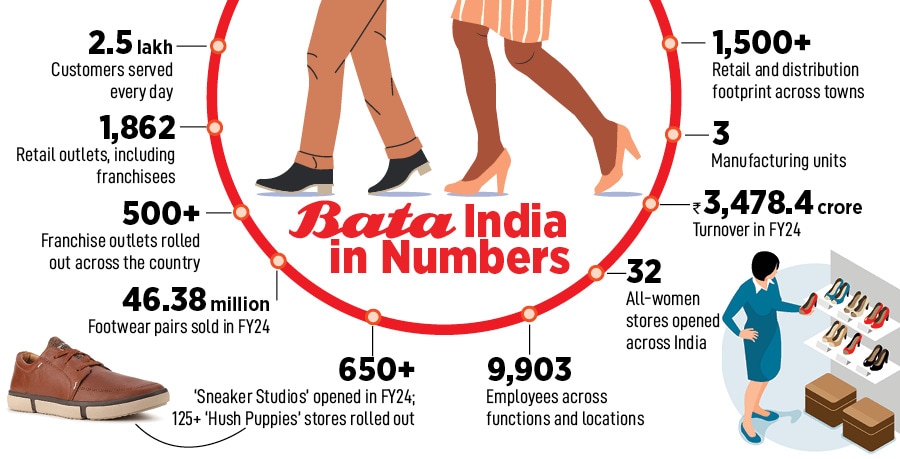
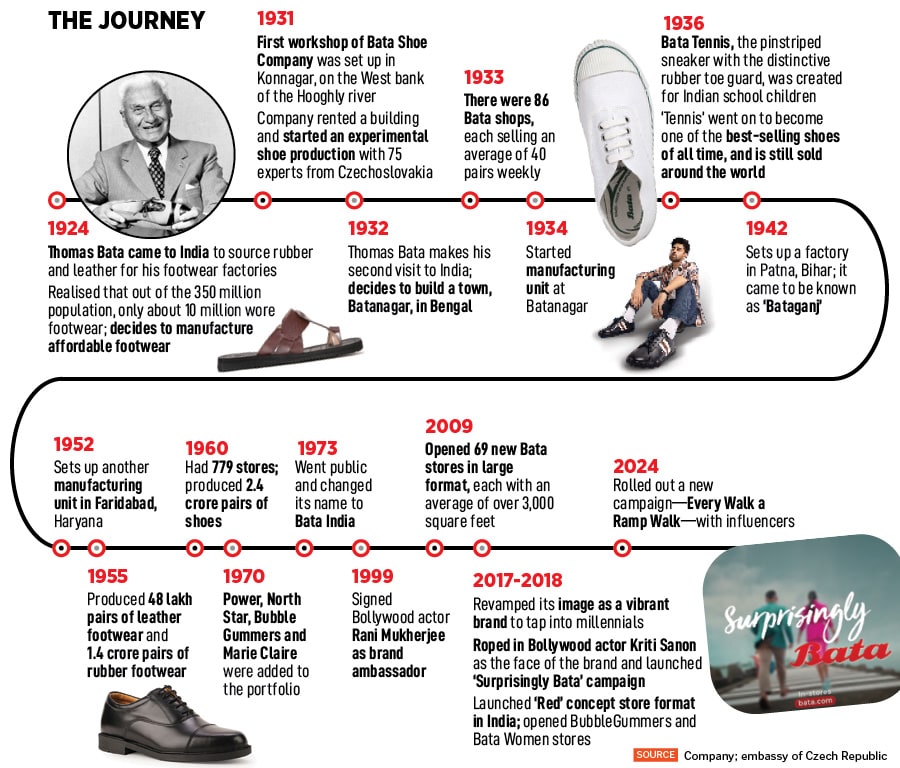
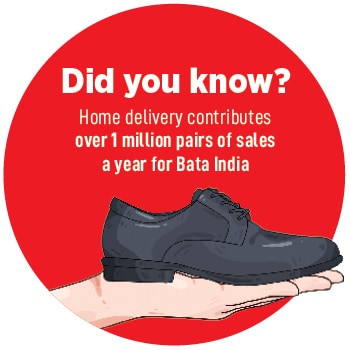 In FY24, Bata had a reach of over 1,500 retail and distribution partners across towns, 1,862 retail outlets, including franchisees, and served over 2.5 lakh customers every day (see box ‘Bata India in Numbers’). “We also ramped up marketing and advertising investment,” he adds.
In FY24, Bata had a reach of over 1,500 retail and distribution partners across towns, 1,862 retail outlets, including franchisees, and served over 2.5 lakh customers every day (see box ‘Bata India in Numbers’). “We also ramped up marketing and advertising investment,” he adds.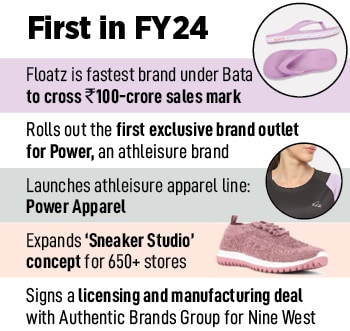 What also worked for Bata was its price tag. Indians wanted quality products but at the right price point. “This price point was called Bata Price,” says Ashita Aggarwal, professor (marketing) at SP Jain Institute of Management and Research. Bata Price, she explains, emerged out of consumer insight. “₹99 was perceived to be cheaper than ₹100, and ₹999 was considered to be much better than ₹1,000,” she adds. What also helped was having an Indian ‘identity.’ “It has always been perceived to be an Indian brand. It is as desi as Tata,” she adds.
What also worked for Bata was its price tag. Indians wanted quality products but at the right price point. “This price point was called Bata Price,” says Ashita Aggarwal, professor (marketing) at SP Jain Institute of Management and Research. Bata Price, she explains, emerged out of consumer insight. “₹99 was perceived to be cheaper than ₹100, and ₹999 was considered to be much better than ₹1,000,” she adds. What also helped was having an Indian ‘identity.’ “It has always been perceived to be an Indian brand. It is as desi as Tata,” she adds.













